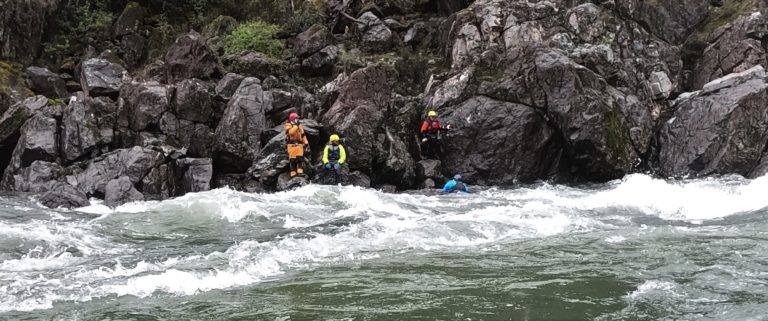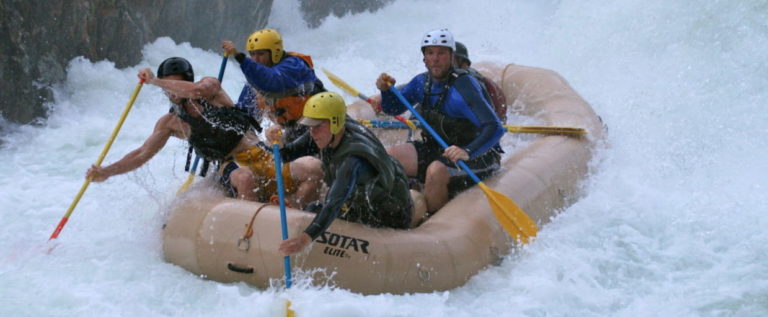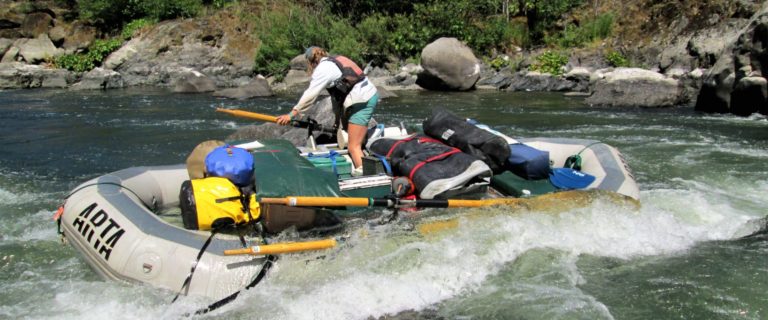Scouting Rapids might seem simple. Get out of your raft or kayak, walk downstream and look at the rapid. Then decide upon a planned route through the whitewater and finally run the rapid. However, there are steps and details within the scouting process that can greatly improve the probability of success while minimizing risk to you and your team.
Before Launching
Before launching on a trip have a guide meeting at put-in to discuss logistics for the day, boat order and any hazards of note. During the meeting decide which rapids to scout as well as where to pull over to scout. It is important to create a safe space so people can be comfortable requesting to scout a rapid. When in doubt, scout.
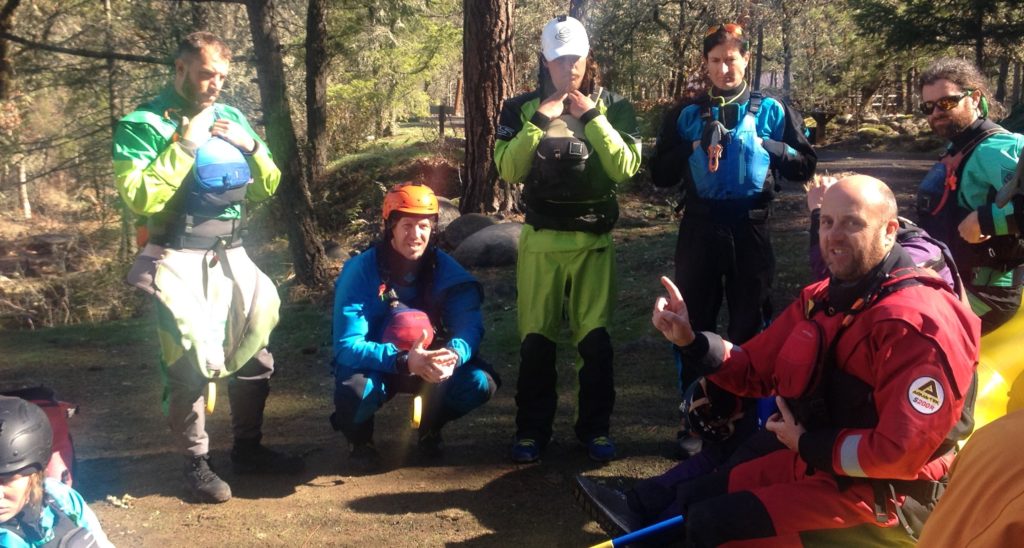
Choosing an Eddy
Use hand signals to remind guides to pull over for the scout. If guiding the lead boat select an eddy that is large enough to easily accommodate all the rafts in your group if possible. Also select and eddy high enough above that rapid that it makes it easy to ferry to the other side of the river before the rapid if necessary. Finally select a side of the river that gives a good view of the rapid and ideally an easy walk to the bottom of the rapid to set safety from shore for the first group of rafts.
When pulling over stop at the top or the bottom of the rapid to make it easier for the rest of the rafts to pull-in. Consider not tying up your raft if you are concerned that another raft may miss the eddy and you would be comfortable running the rapid without scouting. Depending, it also might be best to tie up your raft so you can assist the other rafts catching the eddy – it all depends!
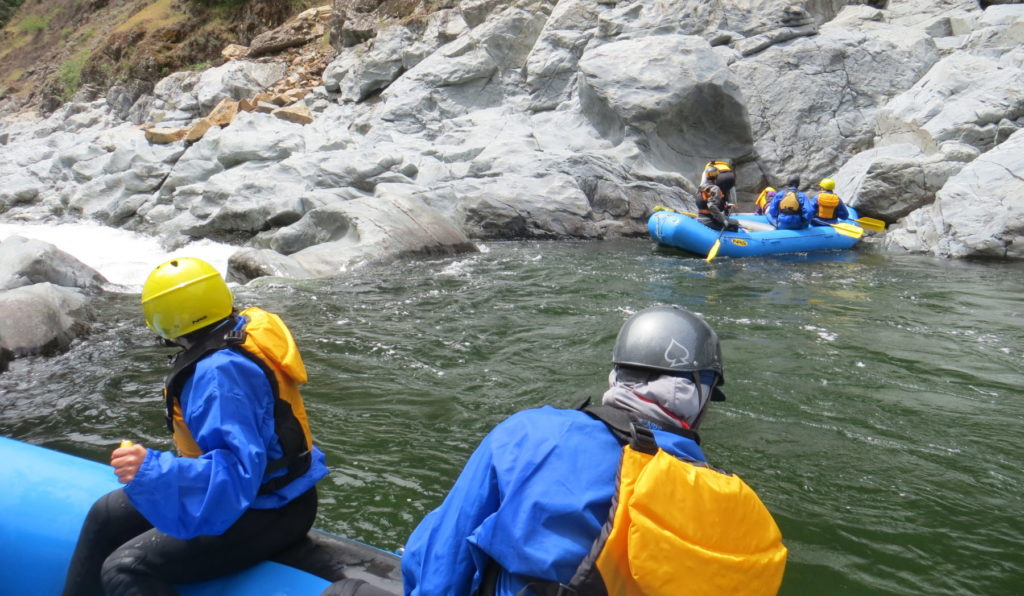
Walking to Scout
The basic rule for scouting rapids is be prepared to effect a rescue. Wear your life jacket and helmet properly fastened and bring a throw bag with you. If scouting multiple rapids on a trip I like having a waist throw bag to make this easy. If the scout will take some time consider bringing water as well or cameling up (drinking a bunch of water) before heading out on your scout. Best practices include tying up your raft even though many guides will ask someone to hold the raft when they scout. While this usually works out fine, sometimes the person holding the raft can end up stuck there for a long time particularly if they don’t know how to tie off the raft.
Make sure to let your crew know what is happening at the scout and what they need to do. Keep an eye on guests, they can do goofy things like decide to go for a swim above a big rapid while all the guides are gone.
“Hey everyone, the guides are going to go quickly scout this rapid and then come back to run it. Please leave you PFD and helmet on while we are gone.”
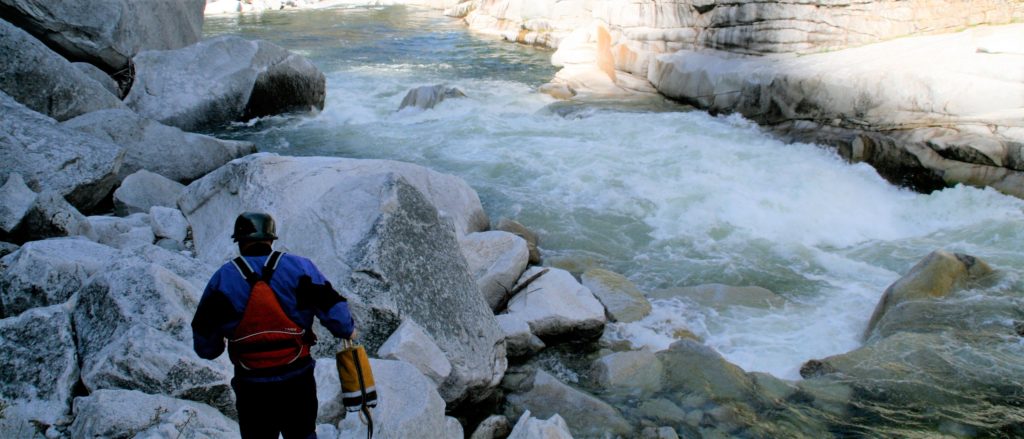
Quality Footwear
When scouting on rocky rivers like in the photo below be sure to have quality river shoes with sticky rubber. The right shoes make scouting safer and helps rafters and kayakers be more proficient rescuers. More people seem to get hurt on shore walking around in the rocks than when actually running the rapids. On a river where I’m doing lots of treacherous scouting, I consider my river shoes my most important piece of safety gear.
Scouting the Rapid
A helpful acronym for scouting whitewater rapids is OMS (Obstacles, Markers, Swimmers). Recognize and identify obstacles as well as determine their run-ability. However, rather than focusing on the nasty obstacles focus on the best route(s) through the rapid. Establish markers so you know where you are in the rapid and to help with the entrance. Finally consider swimmers. If someone where to fall out at any point in the run consider the consequences of a swim and how it varies depending upon the route you choose.
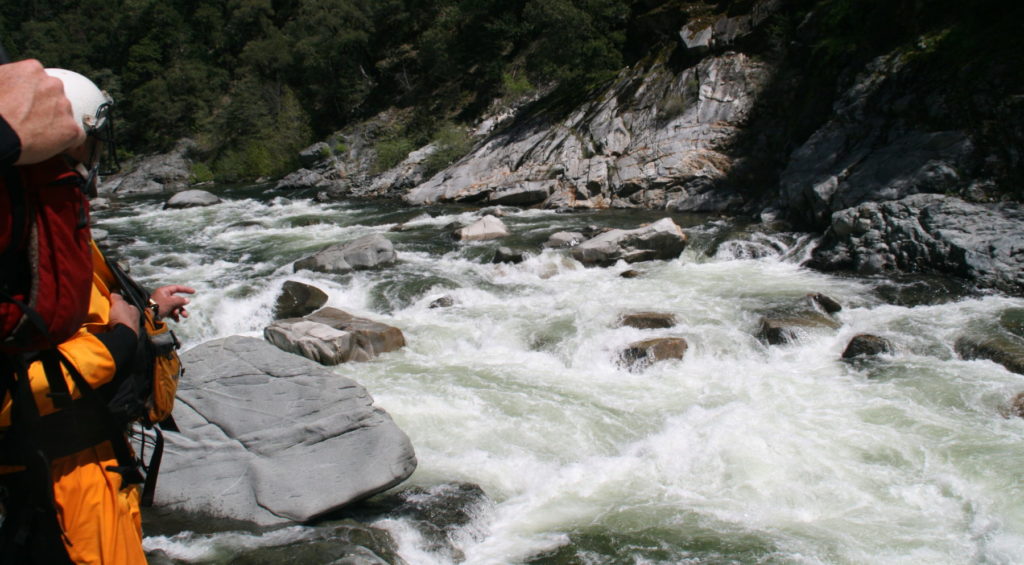
Where to Start Scouting
Start scouting at the bottom of the rapid so you know where you can end up at the bottom as you work your way back to the top of the rapid. During this process be sure to identify, eddies and any other opportunities to stop (like perches) within the rapid. Consider the momentum of the raft and where pushing or pulling (forward or back paddling) might work best. Look for features that you may need to “over” (hyside) against to prevent a wrap or flipping.
Rapid Markers
Markers are anything distinctive in the rapid or next to the river. Exposed rocks and wood strainers make distinctive markers. Take extra care to find good markers at the entrance of the rapid as this can be one of the most challenging parts of running a rapid the first time. It is helpful to get next to the river and ideally on some rocks that stick out into the river. The more similar your view is to the view you will have when running the rapid the more helpful your markers will be. If you can’t get riverside consider the distance you are above the river, that hole many times is bigger than it appears.
“The more you scout, the more you doubt, get your line and get out.”
Ben Wartburg
After scouting you should have options prioritized based upon the difficulty of the maneuvers and the consequences of a mistake. In general look for the route with the least difficulty and least consequences. Visualize your ideal run. As you walk back to your rafts continually check to make sure you can still identify your entrance markers.
Visualize but Don’t Get Stuck
It helps to visualize your preferred line. However, once on the water if you find yourself off that line go forward from there. Many bad runs happen because guides try to get back on plan A and end up on plan P, Q, R or S rather than settling for plan C or D.
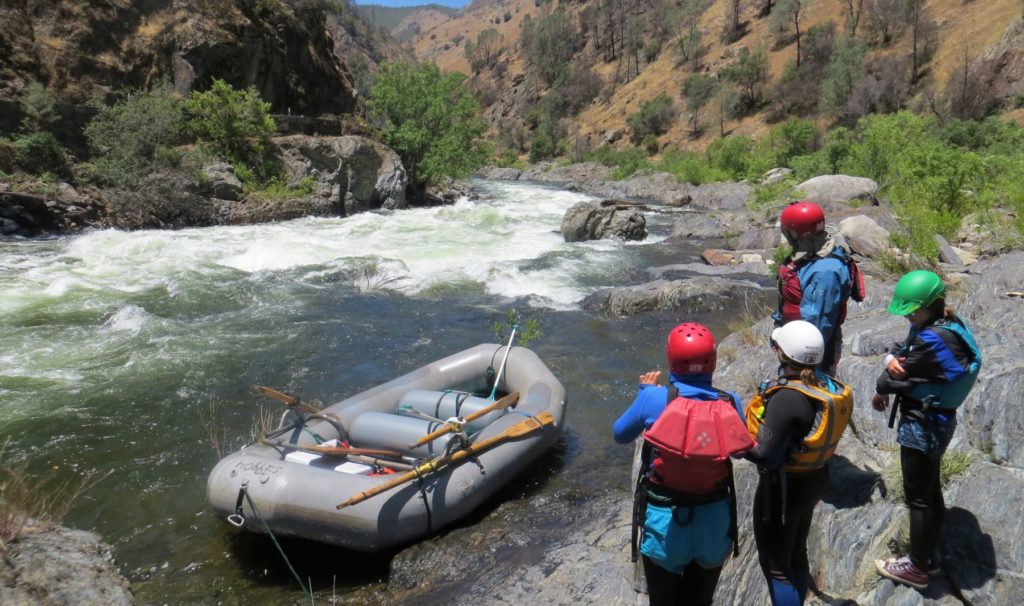
Prep Your Crew
If your crew is scouting with you, point out helpful markers to them. Discuss key commands that you will likely be giving, best places to swim, and how to swim in the river.
Boat Scouting Rapids
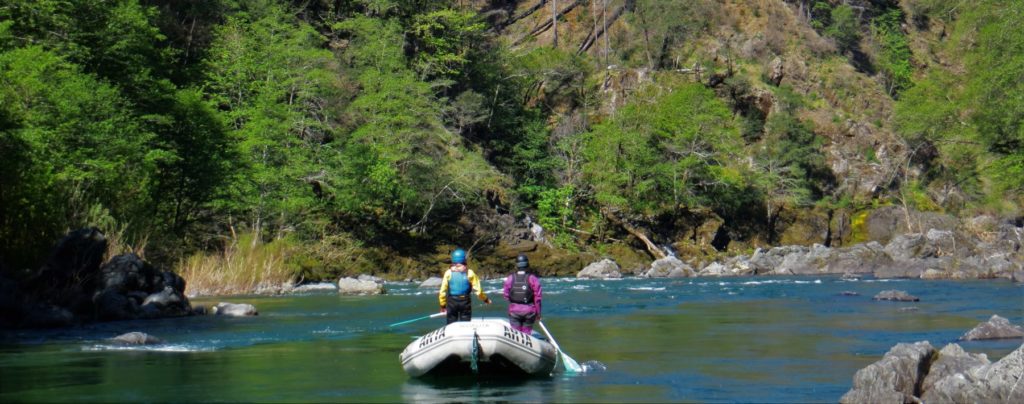
Sometimes when running a rapid it isn’t necessary to get out of the raft to scout but you might want to get a better view. Boat scouting improves visibility of the rapid. Stand up in the raft, maybe even get a little better vantage point by standing on top of a thwart or cooler. Depending upon the rapid you may want to pull over in an eddy to boat scout.
Boat scouting can also be done by eddy hoping down the river. Kayakers do this regularly but rafts can also use this trick on the right rapids. Watch the video below to learn more about scouting rapids.
Video: Scouting Whitewater Rapids
Portaging and Lining Rapids
Wimp to wimp another day. If you scout a rapid and it doesn’t look good don’t force a bad line. On most day trips rafts are light enough to easily be pulled over rocks and lined down sections of river if necessary. A key part to lining and portaging is to make a decision quickly and get started since it usually takes more time.
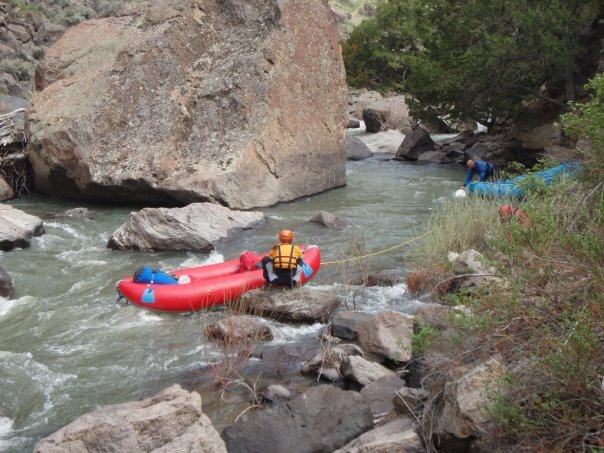
Final Thoughts on Scouting Rapids
When scouting take your time, there is no need to feel rushed. However, spending too much time scouting can stress out members of your group so be efficient. Be sure to keep your rafts together and communicate with our groups about your plan. We are all on the river to have a good time. Unfortunately, if you are at scout there is a good chance that some people will be stressed. Promote calm and be understanding.
When scouting you’ll also want to think about how to run as a group and where to set safety. For example you could run all together or in smaller groups. If not all are running together than those watching can set safety on shore with throw bags at key locations.
